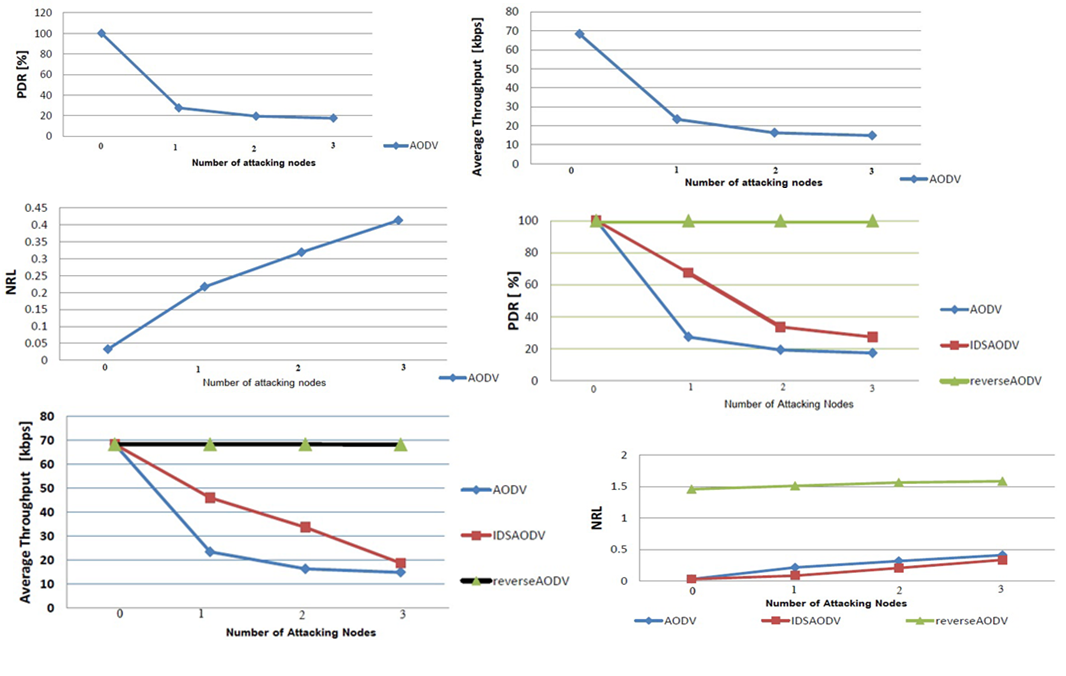Performance Ameliorations of AODV by Black Hole Attack Detection Utilizing IDSAODV as Well as Reverse AODV
DOI:
https://doi.org/10.17762/ijcnis.v14i2.5483Keywords:
Mobile Wireless Networks, Black Hole Attack, IDSAODV, Reverse AODVAbstract
The so-called Black Hole Attack is among the most perilous and widespread security attacks in MANET nets, researchers have been tasked with developing strategies to detect it. Two of these methods are the Intrusion Detection System AODV (IDSAODV) as well as the Extended AODV. The present paper attempts to investigate the impact of a Black Hole Attack on the functionality of the network in the existence of single or more attackers. It also evaluates the Extended AODV and IDSAODV in a net in order to see how effectively they could detect and mitigate the attack. For the aim of evaluating its performance, the researchers utilized Throughput, Normalized Routing Load (NRL), and Packet Delivery Ratio (PDR). The comprehensive simulation results show that the IDSAODV application decreased the effect of the attacks. However, it raised the rate of packet delivery to sixty eight percent at the identical time. Reverse AODV, on the other hand, provided superior outcomes, with a PDR of 100%, but also resulted in an exceedingly higher NRL than the IDSAODV. Likewise, the simulation findings demonstrated that the attacking node's position tormented the IDSAODV's functionality.
Downloads
Published
How to Cite
Issue
Section
License
Copyright (c) 2022 Author

This work is licensed under a Creative Commons Attribution-NonCommercial-ShareAlike 4.0 International License.




